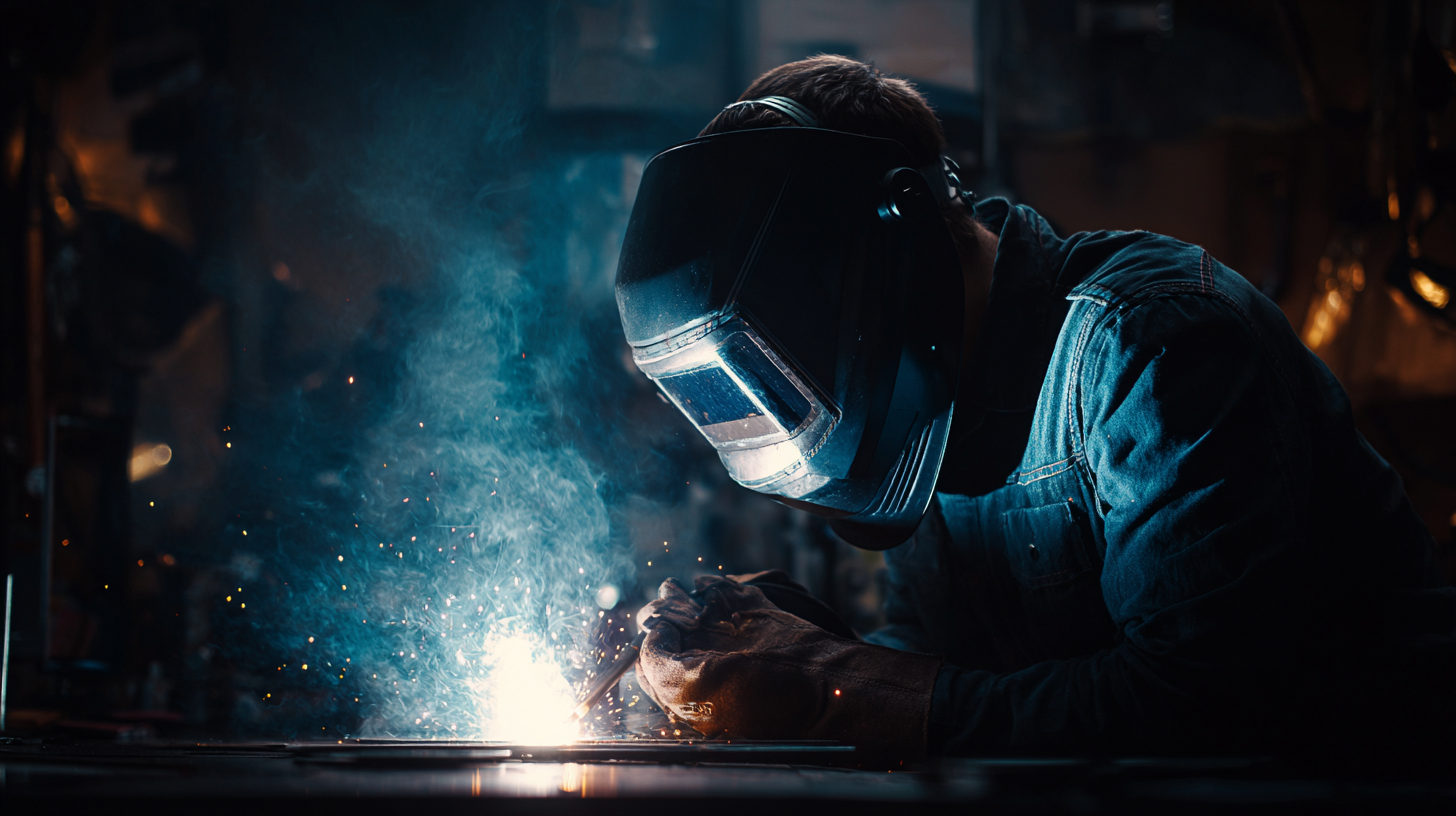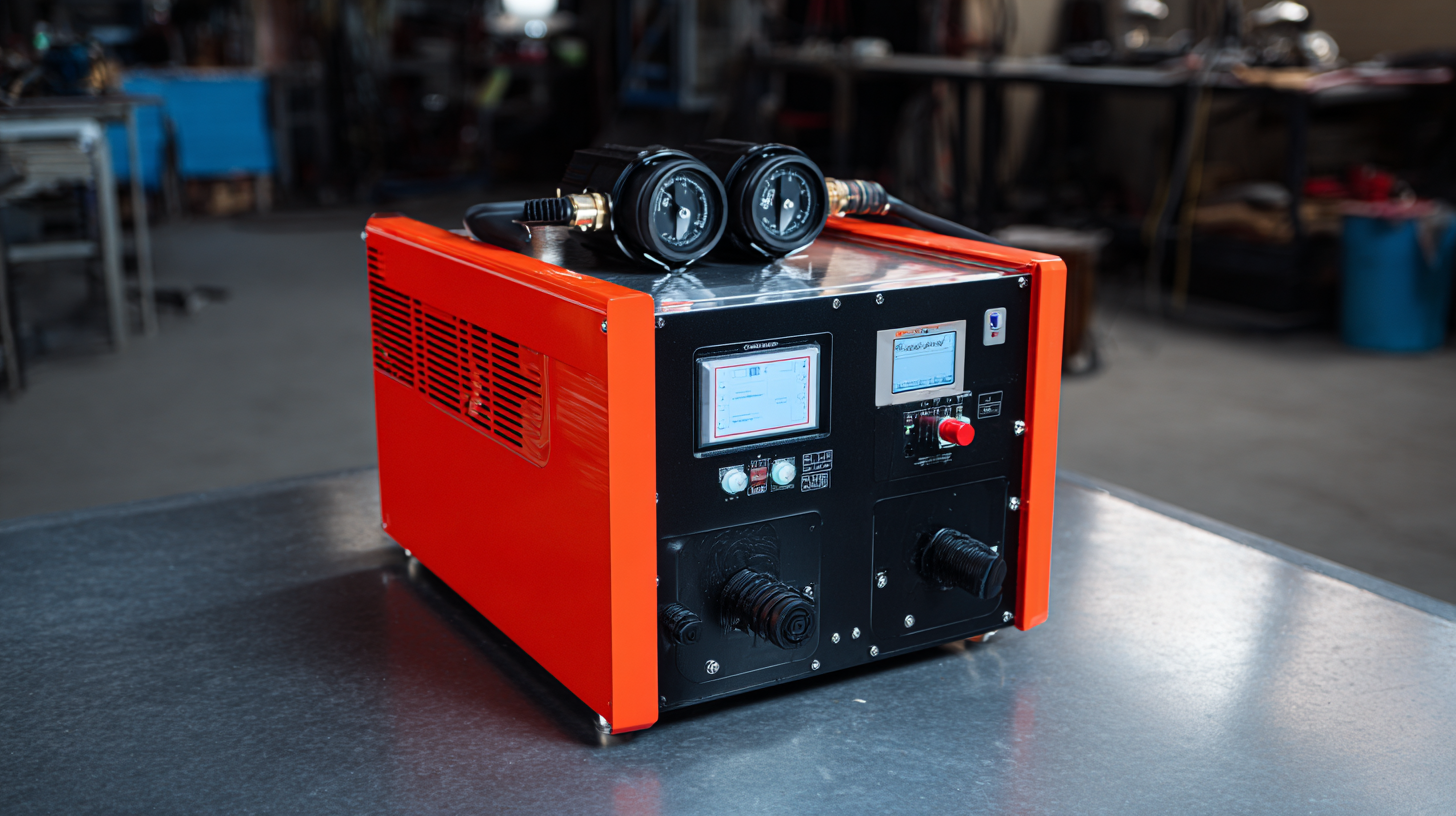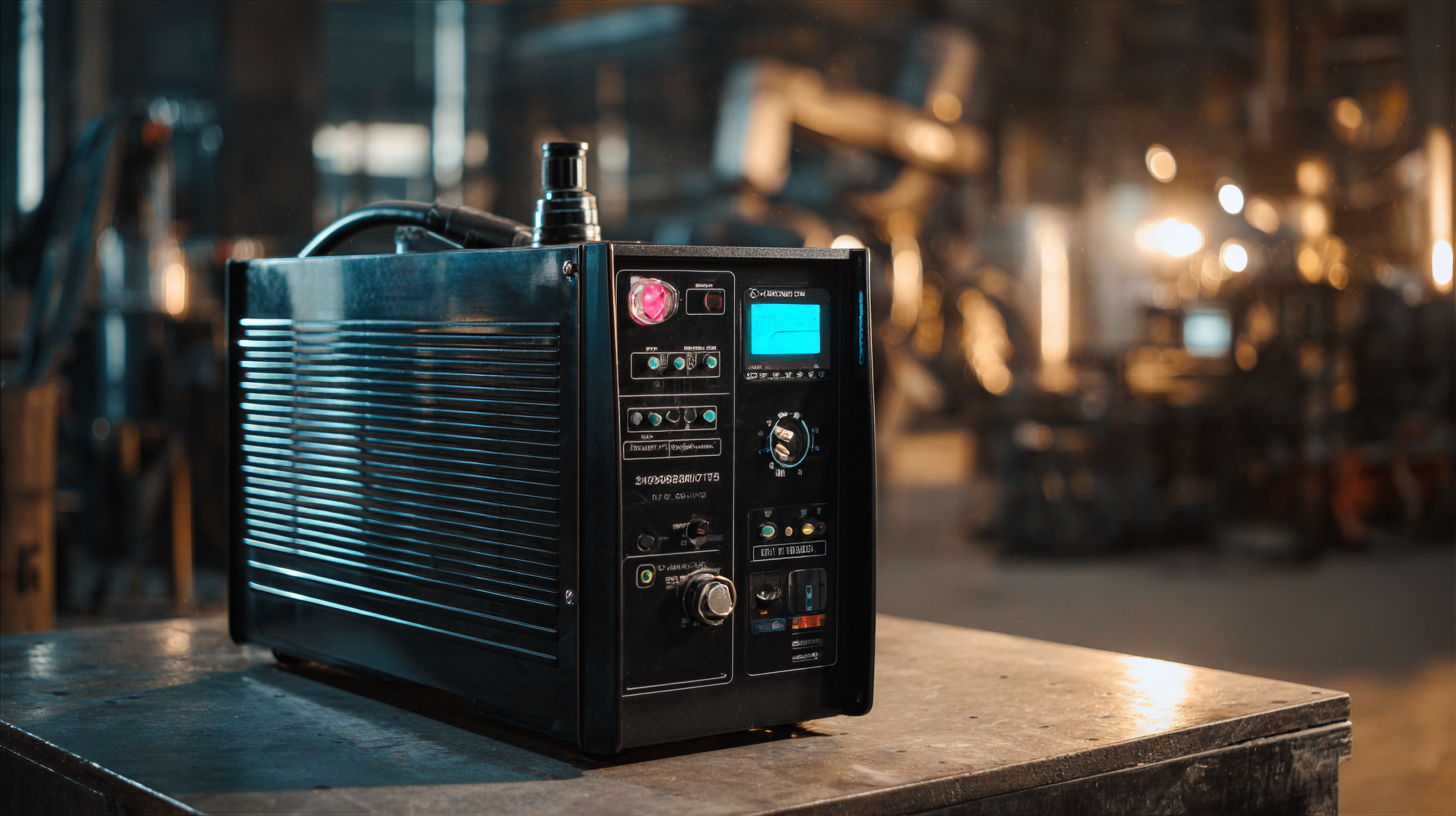In recent years, the advancements in welding technology have led to the increasing popularity of Inverter Welding Machines, which are now considered essential tools in various industries. According to a report from MarketsandMarkets, the global welding equipment market is projected to reach $24.3 billion by 2025, with inverter welding machines playing a critical role due to their compact design and efficiency. These machines utilize advanced electronics to provide a stable arc and energy savings, making them ideal for professional welders and DIY enthusiasts alike. With the ability to handle a variety of materials, including steel, aluminum, and alloy, the versatility of inverter welding machines has expanded their applications significantly, from automotive fabrication to construction and repair work. As we delve deeper into the features and applications of the best inverter welding machine variants, readers will gain valuable insights to enhance their welding practices and choose the right equipment for their specific needs.

When investing in inverter welding machines, one critical aspect that often gets overlooked is the importance of after-sales service. A reliable after-sales service can significantly enhance the user experience, ensuring that the welding equipment performs at its best throughout its lifespan. When issues occur, having access to qualified technicians and prompt repairs can minimize downtime, allowing businesses to maintain their productivity and efficiency.
Moreover, after-sales support often includes training and guidance on proper machine usage and maintenance. Many manufacturers provide workshops or tutorials that help users understand the advanced features of their inverter welding machines. This educational aspect not only empowers welders to leverage their equipment fully but also instills confidence in their skills, leading to more efficient and high-quality work. Ultimately, the value of strong after-sales service is reflected in enhanced performance, reduced operational hiccups, and long-term customer satisfaction.
When considering the cost efficiency of inverter welding machines, it is crucial to analyze the maintenance expenses associated with different models. A recent study highlighted that advanced analytical methods can significantly improve maintenance efficiency in various industries, including manufacturing and healthcare. By implementing AI-driven predictive maintenance systems, organizations can minimize equipment downtime and enhance productivity, ultimately leading to reduced long-term costs associated with equipment failure and maintenance needs.
Moreover, innovative technologies such as deep learning and machine learning are transforming supply chain management, which can also impact the operational costs of inverter welding machines. Efficient inventory control and supplier selection can result in lower maintenance expenses by ensuring that high-quality parts and services are readily available. For instance, research indicates that effective supply chain practices can lead to a reduction of maintenance costs by as much as 15-25%, underscoring the value of integrating modern technologies into industrial operations.
As the shift towards sustainability continues, inverter welding machines that integrate renewable energy sources can also offer long-term savings on energy costs. By leveraging insights from recent evaluations of energy transmission costs and the benefits of electric vehicles, manufacturers can strategically select inverter welding machines that not only reduce greenhouse gas emissions but are also economically advantageous over time.

In recent years, inverter welding machines have become a game-changer in the welding industry, thanks to their innovative features that enhance efficiency and versatility. One of the standout characteristics of modern inverter technology is its compact size and lightweight design, making these machines incredibly portable.
 This not only benefits professional welders who require mobility on job sites but also appeals to hobbyists looking for convenience without sacrificing power. Furthermore, many models now come equipped with advanced digital displays, providing real-time feedback that helps users achieve the optimal settings for various welding tasks.
This not only benefits professional welders who require mobility on job sites but also appeals to hobbyists looking for convenience without sacrificing power. Furthermore, many models now come equipped with advanced digital displays, providing real-time feedback that helps users achieve the optimal settings for various welding tasks.
Another significant innovation in inverter welding technology is the integration of smart features, such as self-adjusting mechanisms and arc control systems. These advancements simplify the welding process by allowing the machine to automatically adjust its settings according to the material thickness and type, thus ensuring a cleaner weld and reducing the likelihood of defects. Additionally, the incorporation of inverter technology enhances energy efficiency, leading to lower operational costs and a reduced environmental impact. As these machines continue to evolve, their applications expand into industries ranging from automotive to construction, solidifying their status as essential tools for both professional and DIY welders.
The inverter welding machine market is poised for significant growth, driven by advancements in technology and increasing demand across various applications. Industry analysis indicates that the market capacity for welding equipment has been consistently expanding, with a projected growth rate of 4% to 6% annually over the coming years. As of 2017, the global welding equipment market was valued at approximately 218.6 billion yuan, reflecting a robust performance attributed to the ongoing recovery in global manufacturing and the rapid development of emerging industries.
Inverter welding machines, particularly, are gaining traction in key sectors such as shipbuilding, energy, and automotive industries, owing to their efficiency and versatility. By 2033, the inverter welding machine market is expected to continue its upward trajectory, with a diverse range of types including MMA, MIG/MAG, and TIG welding machines contributing to this expansion. The demand for high-quality welding solutions in high-tech industries, heavy industry, and lightweight sectors reinforces the relevance of inverter technology in meeting contemporary manufacturing needs.
| Model | Power Output (Amps) | Duty Cycle (%) | Weight (kg) | Features | Common Applications |
|---|---|---|---|---|---|
| Inverter Model A | 200 | 60 | 8.5 | IGBT technology, Overload protection | MIG, TIG welding |
| Inverter Model B | 180 | 70 | 7.2 | Lightweight, Energy efficient | Maintenance work, Fabrication |
| Inverter Model C | 250 | 50 | 9.0 | Multiple voltage settings, Hot start | Heavy industrial welding |
| Inverter Model D | 300 | 60 | 10.5 | Pulse welding capability, Digital display | Automotive applications, Pipeline welding |
When selecting an inverter welding machine, it’s crucial to understand the strengths and weaknesses of the various brands available on the market. Popular choices such as Miller, Lincoln Electric, and ESAB each offer unique features that cater to different welding needs. Miller welders are renowned for their reliability and user-friendly interfaces, making them a favorite among beginners and professionals alike. Their proprietary technologies enhance arc stability, which is essential for achieving clean welds.
On the other hand, Lincoln Electric is celebrated for its innovative designs and powerful performance. Their inverter machines often come with advanced features like power control settings that accommodate different welding environments and materials. Additionally, ESAB stands out with its compact models that provide excellent portability without compromising on quality. Their products are engineered to deliver consistent performance, making them ideal for both on-site and workshop applications. By comparing these popular brands, users can make informed decisions tailored to their specific welding requirements.
